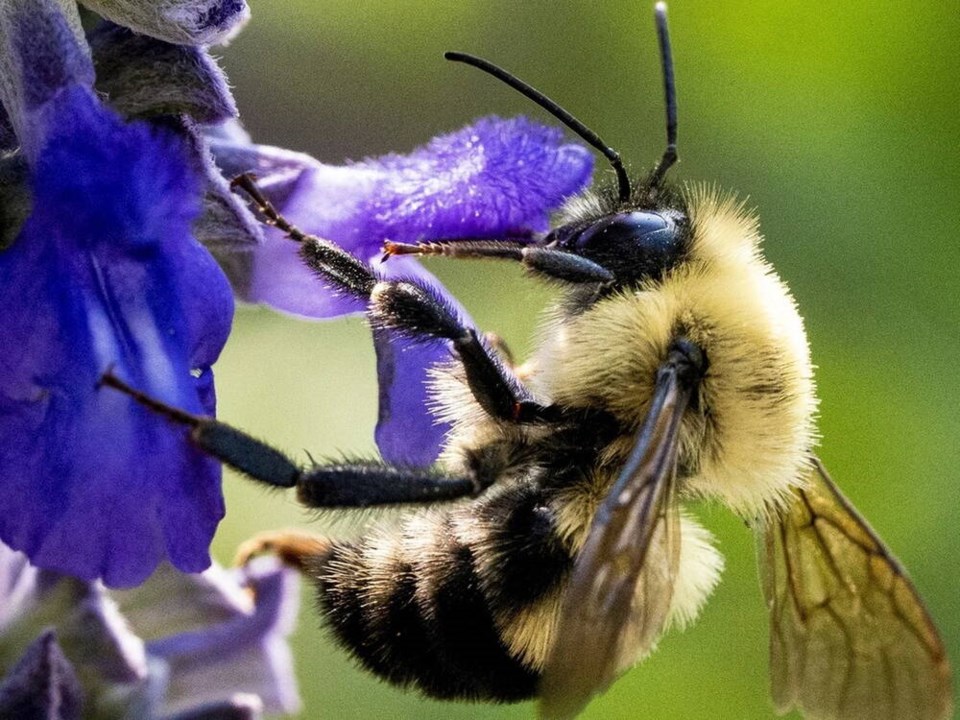Improving habitat for wild bees can significantly improve crop yields for farmers, especially as they face increased threats from climate change, says a UBC researcher.
Matthew Mitchell, an assistant professor in the UBC faculties of forestry and land and food systems, along with Nature Conservancy Canada, analyzed the link between diminishing numbers of wild pollinators and reduced farm productivity in a recent study published in Environmental Research Letters.
“We’re losing a lot of these species and the domestic honeybees are having issues. … And it’s it’s becoming harder to keep bees and have them pollinate crops as well,” said Mitchell in an interview.
“I think there’s a realization that we need to focus on diverse wild species because it provides kind of insurance with climate change. Some species may decrease … what if we just rely on honeybees and we lose the honeybees. What do we do now? We’re stuck.”
Researchers analyzed publicly available data on Canadian crops, farm income and nearby pollinator habitats such as forests, wetlands and grasslands to estimate the potential food production and farm income that could be gained if wild pollination was increased.
In B.C., researchers looked at areas where there was less than 30 per cent natural habitat within two kilometres of cropland that needs pollinators. They then predicted crop yields if that habitat was more than 30 per cent, and calculated that with improved pollinator numbers farm income would increase by $79 million a year.
He said the tricky part is finding land to restore for wild habitat when farmers need to use it to plant more crops, especially when extreme weather affects harvest.
“But sometimes there are fallow fields or areas that have very low yields and are not profitable for the farmers,” he said, adding that by making these areas into wild habitat they can increase their yield in the rest of the field.
Mitchell said wild bees can be better pollinators with certain crops, for example blueberries.
“When they get in the flower they buzz, they vibrate their body and basically get significantly more pollen off the flower than a honeybee does and so they can actually can be a lot better at pollinating those crops,” he said.
He said other measures that could be taken to improve habitat for wild bees are planting more urban gardens and finding alternatives to industrial pesticides, which can kill wild pollinators.
In Saskatchewan and Alberta, the two provinces most affected by lack of pollinator habitat near croplands, increasing wild pollinator habitat and populations could increase farm income by approximately $1.6 billion for Saskatchewan and $597 million for Alberta, the study also found.



